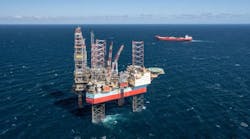Growth and volatility are driving global demand for change in the energy industry. There is a mission critical need for leaders who can successfully face persistent and continuously emerging challenges that drive change in the industry. Nowhere is this more evident than in today's offshore E&P environment.
Bruce Bullock, director of SMU Cox's Maguire Energy Institute, boils down the industry's challenges to financial performance: "The industry has to find ways, through technology, efficiency, science and other strategies to really improve its financial results over the next several years." The drive for financial performance demands change leadership skills from all levels of management and a new perspective on change.
Business typically has used three perspectives on change, each with its own implementation methods. They are:
- Transitional change: implementation of a known new state
- Developmental change: improvement of what is
- Transformational change: emergence of a new state, unknown until it takes shape, out of the remains of the chaotic death of the old state.
It can be argued that the US government support for General Motors and Chrysler during the 2008-2010 financial crisis saved these firms—and the domestic US auto industry—from a chaotic death. Meanwhile, Ford implemented transitional and developmental changes to effect a transformational change without government support.
The scope and speed of change in today's energy industry requires a fourth perspective on change. The industry must create an asset that did not exist before – a learning organization capable of adapting to a continuously changing competitive environment.
What can oil and gas company leaders do to create such an organization? They must lead change from the periphery. This requires managers to do two things: create an internal market for change and use revitalized units as organizational models for the entire company. More specifically, unit managers create ad hoc arrangements to solve concrete problems by directing employees' responsibilities and relationships toward the company's central goal. Top managers specify the firm's general direction without dictating solutions to individual operations, and spread lessons of revitalized units throughout the company.
Change is mobilized by joint diagnosis of business problems, creating a shared vision of how to organize and manage an operation. This yields consensus for the new approach, requires the development of new competence to execute it, and results in cohesion to move it along. Then the new idea can be spread to other departments. After that, formal policies, systems, and structures can institutionalize revitalization. Ongoing monitoring will allow for adjustments and responses to new problems and changes in the competitive environment.
Accomplishing this will require new skills of managers. They must encourage problems to surface and resolve them at the lowest possible level. In order to promote the skills of problem solving and teamwork in their employees, managers must abandon a traditional control orientation for one of involvement. They must become facilitators rather than "bosses." They delegate; they maintain open doors, and they lead by example. They have skills in networking, trust building, and transparency of communication.
In order to develop these skills in managers, energy firms must use all the tools at their disposal. Leaders have three primary learning resources to draw on to help them maintain their competitive edge. They are:
Workplace. Structured on-the-job situations and projects allow leaders to apply new learning. Challenging new assignments can focus on cross-functional growth, multi-cultural experience, business opportunities in growth, new ventures, and turn-arounds, plus informal and formal mentoring relationships.
Classroom. Today's action-oriented classroom provides access to subject matter experts and practitioners. It provides new insights and encourages experimentation with new ways of thinking and behaving by incorporating assessment instruments, simulations, exercises, team projects, case studies, executives who serve as classroom advisors, and instructors who are skilled in facilitating experienced managers to learn from their past experiences—and those of their peers.
Community. The most progressive learning organizations are also using the community as a learning resource to develop critical leadership skills among their managers. These organizations encourage managers to intentionally pursue volunteer activities and service on non-profit boards as part of learning and development plans.
Use of all three of these learning resources promotes continuous learning and develops the skills of flexibility and adaptability. They also develop leadership skills in trust building, networking, communication, and empowerment needed to promote teamwork and problem solving at all levels. Leaders with these skills will inspire change from the periphery—a hallmark of organizations capable of adapting to continuous change in an uncertain business environment.
Frank R. Lloyd, Ph. D.
Associate Dean, Executive Education
SMU Cox School of Business




